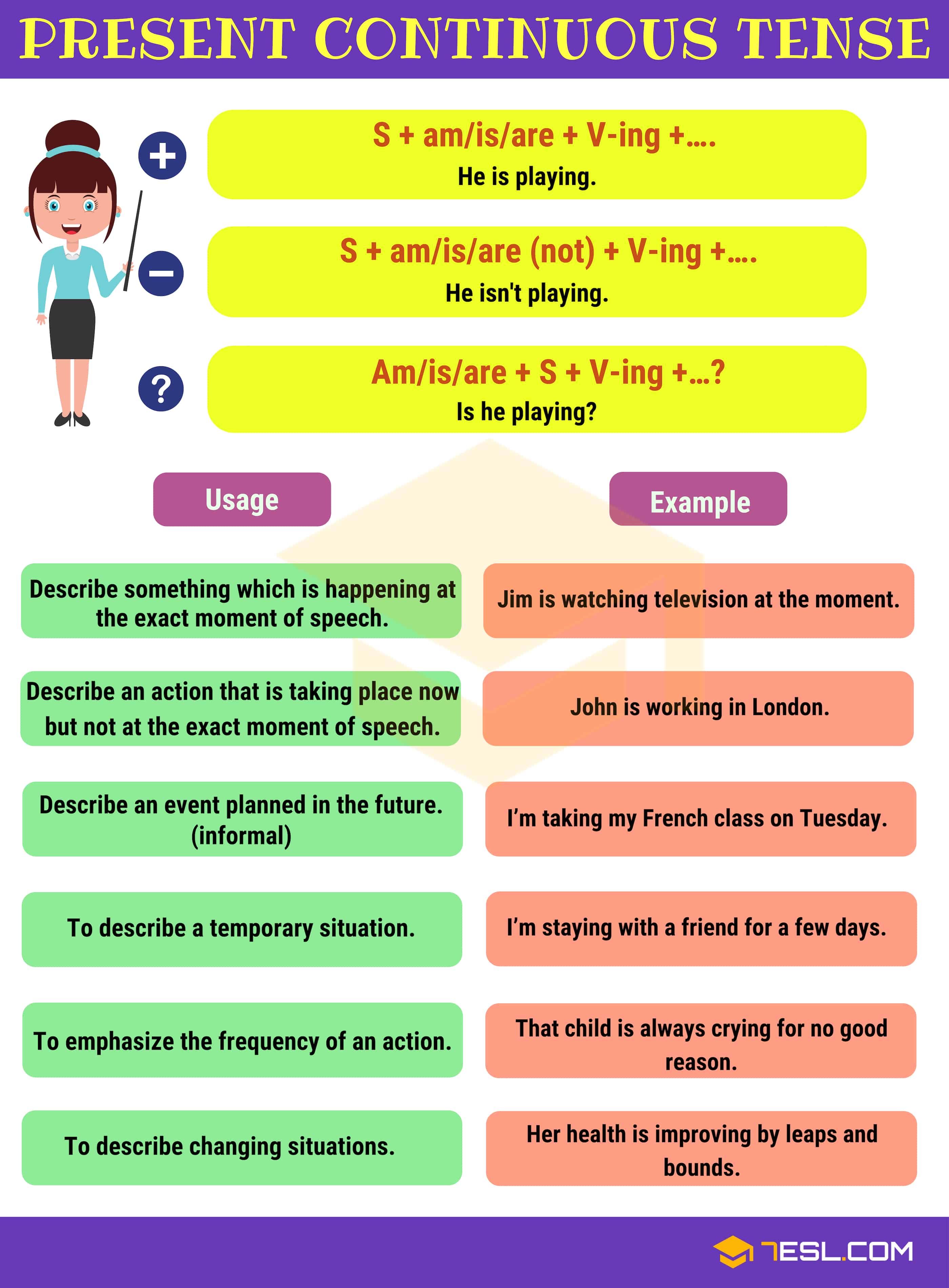
Present Continuous Tense Definition, Useful Rules and Examples • 7ESL
Present continuous 1 Present continuous 2 future plans or arrangements: Mary is going to a new school next term. What are you doing next week? Present continuous 3 Present continuous 4 Present continuous questions We make questions by putting am, is or are in front of the subject: Are you listening? Are they coming to your party?

10 Present Continuous Tense Example Sentences English Vocabs ZOHAL
Here are 50 sentences of present continuous tense. Affirmative Sentences Tom is learning grammar rules. You are the one who is giving information. I am taking breakfast now. Steve is reading a book now. Alice is talking with her friend. She is going to Spain Sunday. I am training to become a professional footballer. She is waiting for her friends.

20 Present Continuous Tense Example Sentences Archives English Vocabs
The present continuous tense is used to denote actions/events that are continued to be done in the present. It is formed by using a combination of helping verbs 'is' or 'are' and by adding 'ing' to the end of the main verb. Check your understanding of the tense by working out the present continuous tense exercises given in this article. 12,323

PRESENT CONTINUOUS TENSE English ESL Worksheets for distance learning and physical classrooms
The most common use of the present continuous tense is to express an action that's happening now, as in "I am singing," or to express actions that are going on right now and will continue in the near future, as in "She's working on her homework." 50 Examples of Present Continuous Tense
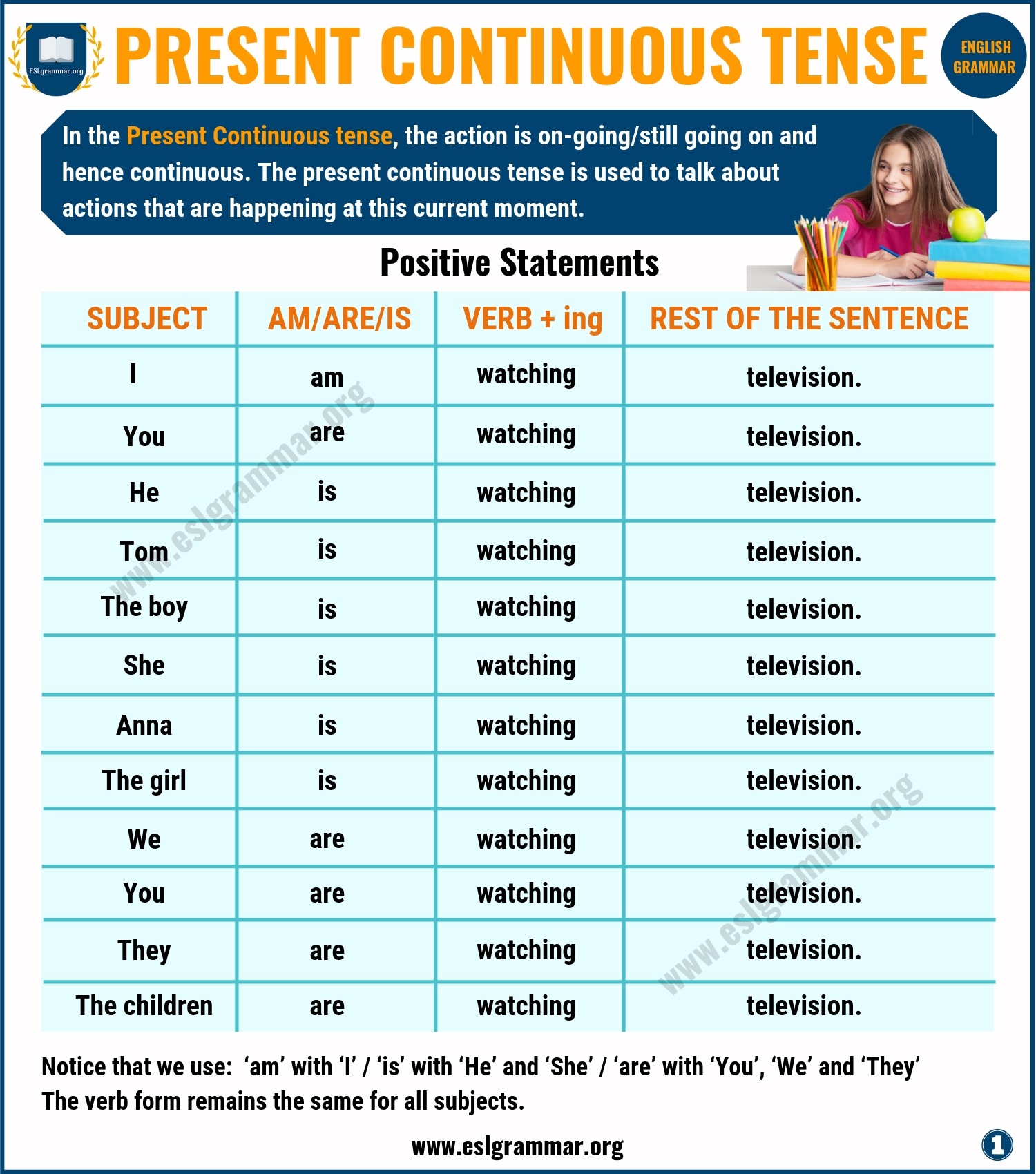
Present Continuous Tense Definition & Useful Examples in English ESL Grammar
The present continuous tense is "the tense used to talk about actions or behaviour that are in progress now or planned for the future", according to the Macmillan Dictionary. Structure of the Present Continuous Tense There is definitely just one formula to mastering the present continuous tense and this is how it goes.

10 Sentences of Present Continuous Tense Examples Example Sentences Present continuous tense
The auxiliary verb (be) is conjugated in the Present Simple: am, are, is The main verb is invariable in present participle form: -ing For negative sentences we insert not between the auxiliary verb and the main verb.. For question sentences, we exchange the subject and the auxiliary verb.. Look at these example sentences with the Present Continuous tense:

Present Continuous Tense 5 examples Archives EngDic
The present continuous tense is a verb tense that shows actions currently occurring. This tense also indicates when the event is temporary. Like other continuous tenses, present continuous uses the present participle form of a verb. Present continuous verbs include a helping verb or an auxiliary verb and the present participle form.
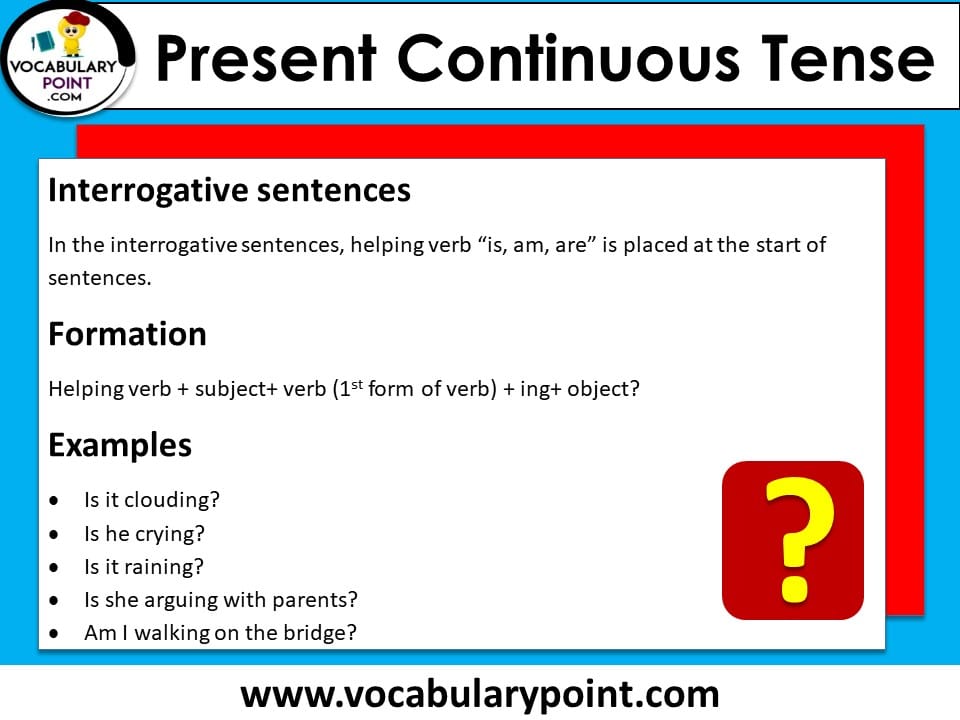
Present Continuous Tense Examples, sentences & formation Vocabulary Point
Present Continuous tense definition: The Present Continuous tense is a tense form that is mainly used to talk about actions that are in progress at the time of speaking. Apart from this, it has some other usages as well. We will look at all the usages of the Present Continuous tense separately.

Present Continuous Tense (Formula, Examples & Exercises) ExamPlanning
The present progressive is used: 1. To describe something which is happening at the exact moment of speech. Example: Jim is watching television at the moment. 2. To describe an action that is taking place now but not at the exact moment of speech. Example: John is working in London.

Present Continuous Tense in English Present Continuous Tense indicate an action which is in
The Present Continuous tense can be used to create positive and negative sentences or a question sentence (interrogative sentence). Forming the Present Continuous Tense: The Present Continuous tense is formed using the present tense of the verb "to be" (am, is, are) followed by the present participle (-ing form) of the main verb.

20 Sentences of Present Continuous Tense, Examples
The present continuous (present progressive) tense is a way to convey any action or condition that is happening right now, frequently, and may be ongoing.It adds energy and action to writing, and its effect helps readers understand when the action is happening. Imagine Aunt Christine has surprised her nephew Scott for his birthday and is going to take him out to his favorite restaurant, Polly.
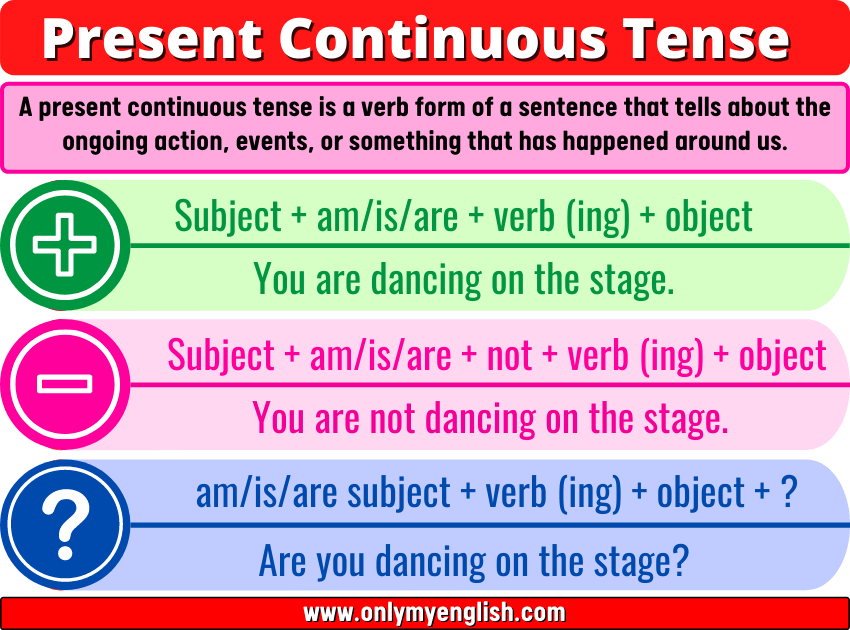
Present Continuous Tense (EXAMPLES & EXERCISE)
The present continuous tense is a fundamental aspect of English grammar that adds depth and context to our everyday conversations and written expressions. The examples of present continuous tense are very important to understand to speak and write English more effectively and clearly.

Present Continuous Tense, Simple Present Tense, Simple Past Tense, Basic Grammar, Teaching
Understanding present progressive (AKA present continuous) tense is important in grammar. Use this guide with examples to see how it's used to show ongoing action.
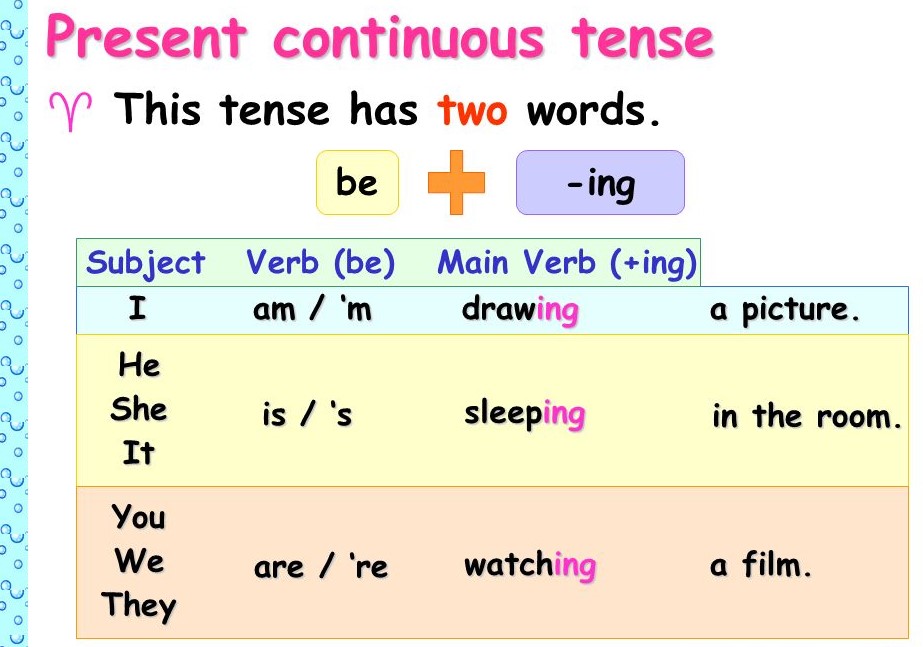
Present Continuous Tense English Grammar A To Z
Present Continuous Tense - With Usage Examples and Pictures. "Present continuous tense" or "present progressive tense" is a verb tense that describes the actions we are doing right now. It is used to express the actions that we are doing at the moment of speaking. The auxiliary verbs are " am, is, are " and we add " -ing " at.
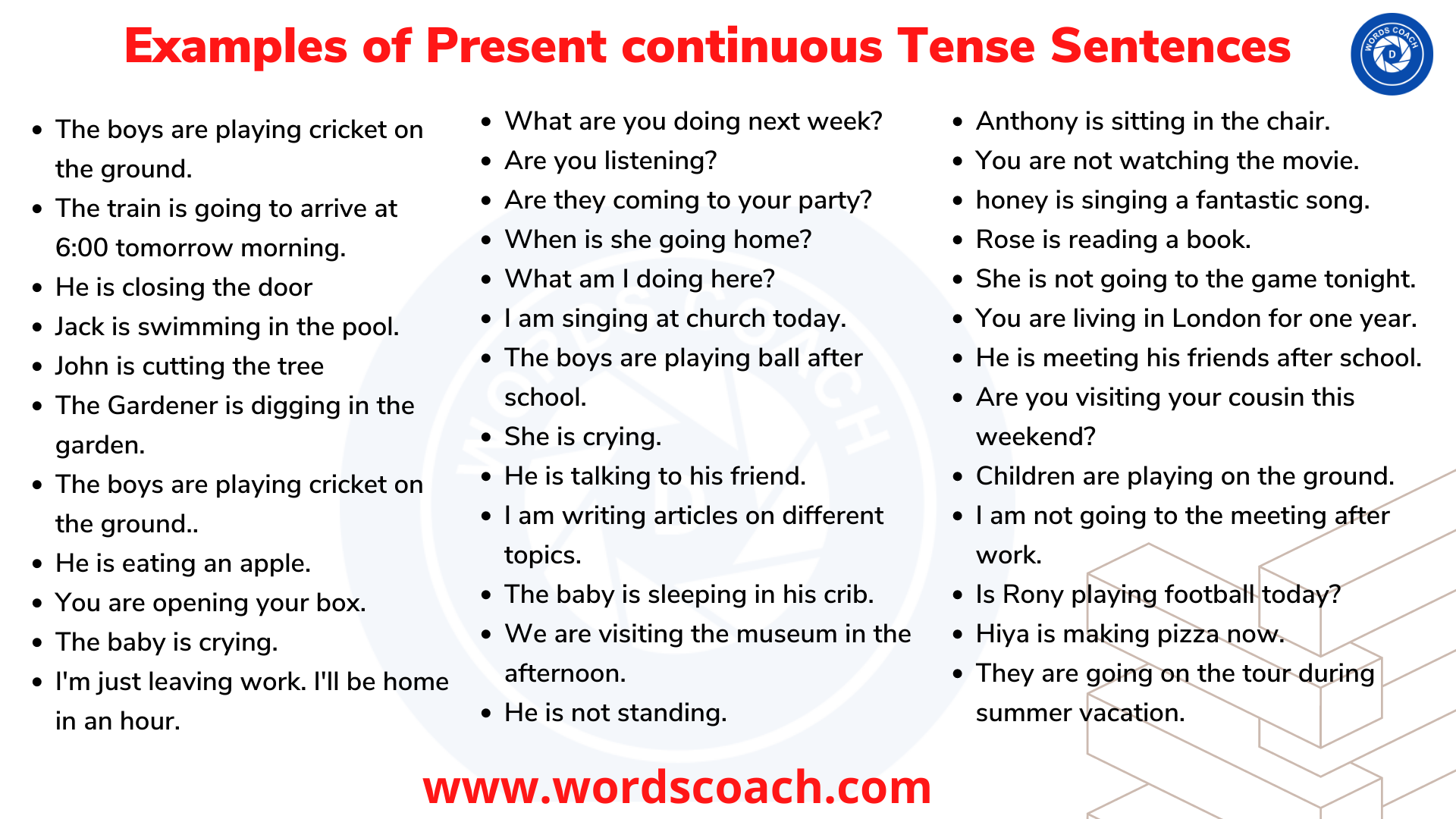
Examples of Present continuous Tense Sentences Word Coach
1.You are not sleeping now. 2.They have been arguing. 3.You see, I'm eating. 4.My mother is coming home. 5.What are you doing now? 6.The fans are shouting with joy. 7.He is not working very hard. 8.I'm not watching TV right now. 9.Children are playing in the park. 10.What is Mr. Samuel doing? 11.The company is doing well this year.
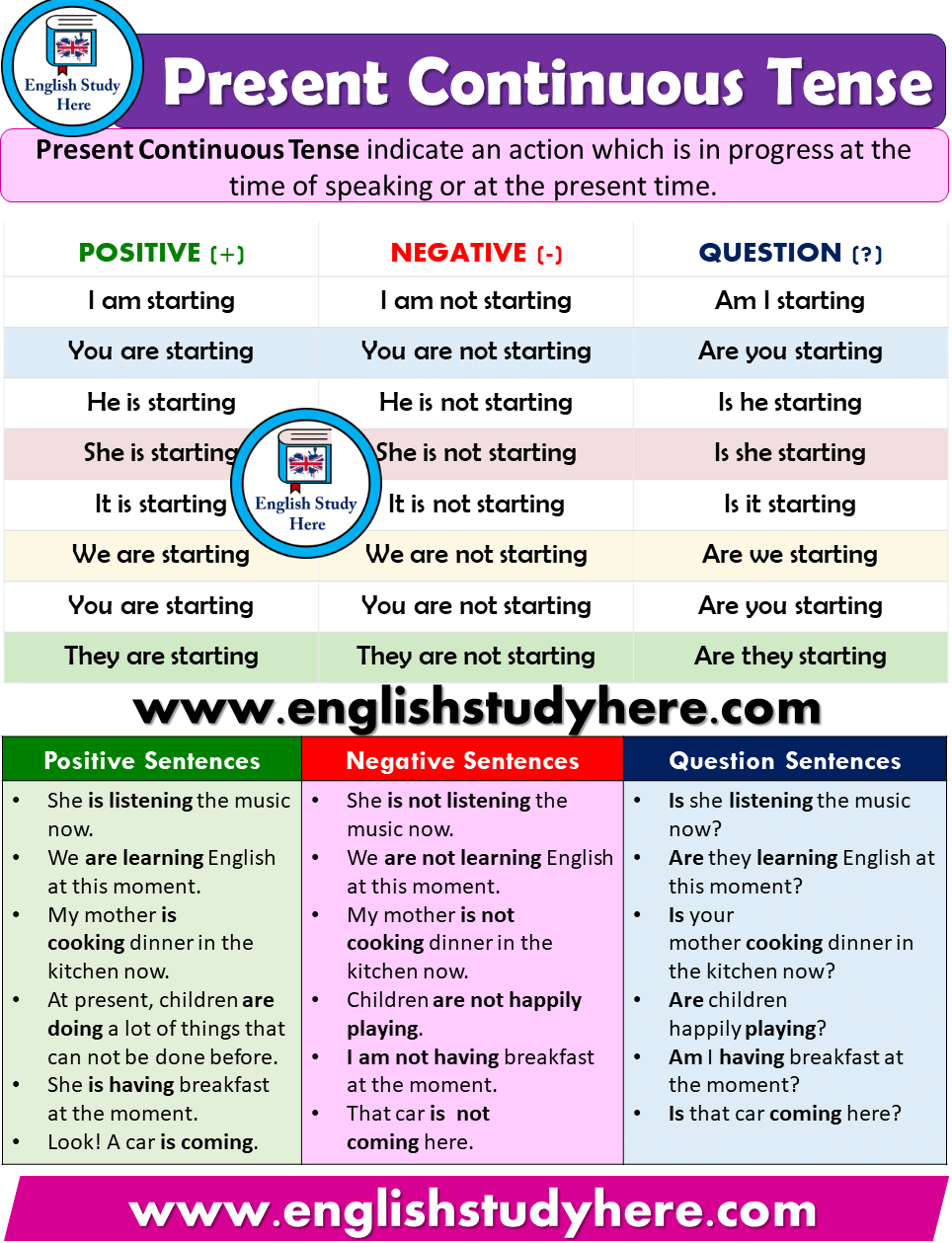
Present Continuous Tense Detailed Expression English Study Here
The Present Continuous Tense is a verb tense which we use to show that an ongoing action is occurring now. It can be either at the moment of speech or now in a larger sense. We also refer to present continuous as present progressive. Further, we can also make use of present continuous to show that an action is going to happen in the near future.